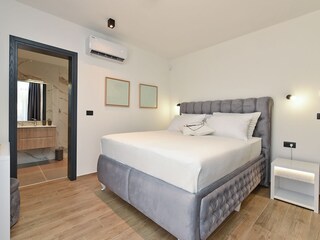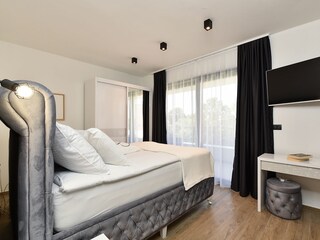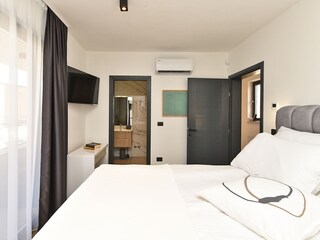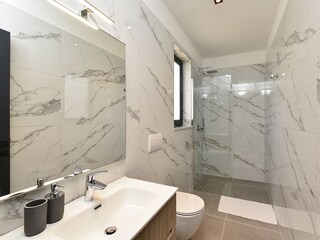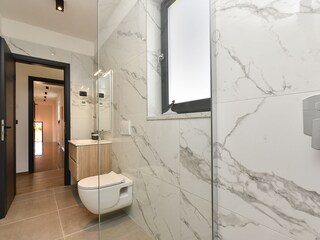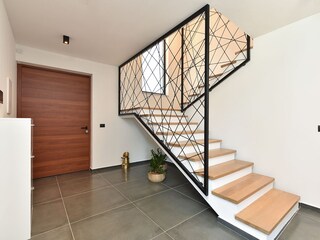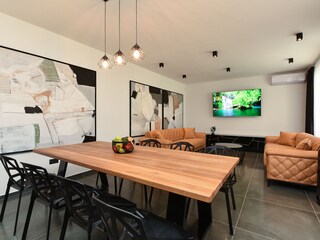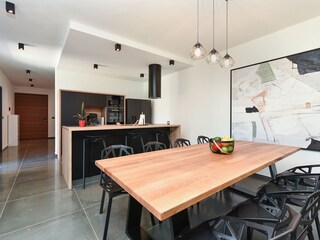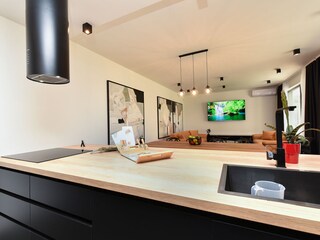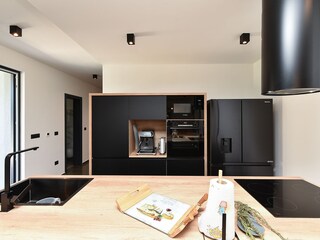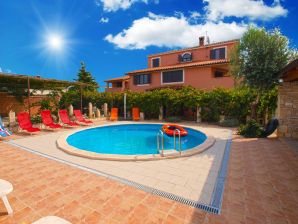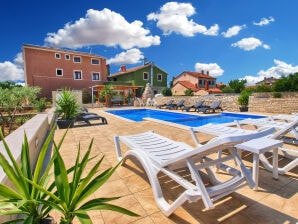1 / 35
Villa Isabella
3 Bedrooms
3 Bathrooms
Max. 8 guests
150 m²
Juršići
View on Map
1 / 35
Please select dates and guests
Description
Villa Oriana is located in Pula. It features two floors: the ground floor and the first floor, and spans 150m2.
It has an air-conditioned living room with a sofa bed for two people and satellite TV. The...
Amenities
3 Bedrooms (1)
Max. 8 guests
150 m²
Free WIFI
Television
Pets and dogs not allowed
Swimming pool
Smoking not allowed
Ground floor
Dishwasher
Washing machine
Prices
Please select dates and guests
Usage-dependent additional costs
Please note that additional usage-dependent costs may apply. For questions about this, please contact the host directly.
Host's notes
Cancellation policy
The host has not specified any cancellation conditions
Rental conditions
- •Deposit: 20% of the rental price by arrangement
- •Final payment: upon arrival
- •Security deposit: €500.00
Payment options
- •Credit card
- •Cash payment
- •Bank transfer
- •PayPal
Location
Distances
AIRPORT30 km
BEACH18 km
DOCTOR5 km
NIGHT LIFE18 km
RESTAURANT2 m
SHOPS2.5 km
TOWN CENTER5 km
WATER18 km
Nearby
Our leisure tips
- •Barbecue
- •Beachvolleyball
- •Bike rental
- •Canoeing
- •Casino
- •Cinema
- •Culture
- •Cycling
- •Dancing
- •Dolphin watching
- •Fishing
- •Gym
- •Horseback riding
- •Jet skiing
- •Jogging
- •Museums
- •Nightlife
- •Paintball
- •Playground
- •Sailing
- •Scuba diving
- •Shipping/boat trip
- •Sightseeing
- •Snorkelling
- •Spa
- •Surfing
- •Swimming
- •Table tennis
- •Tennis
- •Theme park
- •Tobogganing
- •Volleyball
- •Waterskiing
- •Wine tasting
Holiday destination
In the Illyrian period, before the arrival of Roman legions, Pula was merely the surroundings of the nearby Nesactium, which was the political, administrative, military, and religious center of the region. Afterwards, Pula took on a leading role through intensive colonization, trade relations, and its important strategic location. During the centuries of the Roman Empire (from the 1st to the 3rd century), the most valuable monuments of antiquity in Croatia were built here in Pula. The most precious and well-known monument from this period is the Arena. This amphitheater, designed for fights between humans and animals, was built during the reign of Emperor Vespasian in the 1st century AD. In ancient times, Pula had all the achievements of Roman civilization, including an aqueduct, sewage system, forum, which was the center of administration, commerce, and religion, Capitolium with temples (at the Forum), two theaters, a large city cemetery (which Dante also mentions in his work "The Divine Comedy"), houses with splendid mosaics and marble.
Availability
Legend:
Free
Occupied
Contact
Company NARON tourist agency - Ms Isabella TarticchioGerman, English, Croatian and Italian
Accommodation number: 318238
Die Villa has no reviews yet
No review has been submitted for this accommodation yet. Write the first review now!
More accommodations
More accommodations from Company NARON tourist agency - Ms Isabella TarticchioShow all accommodations













